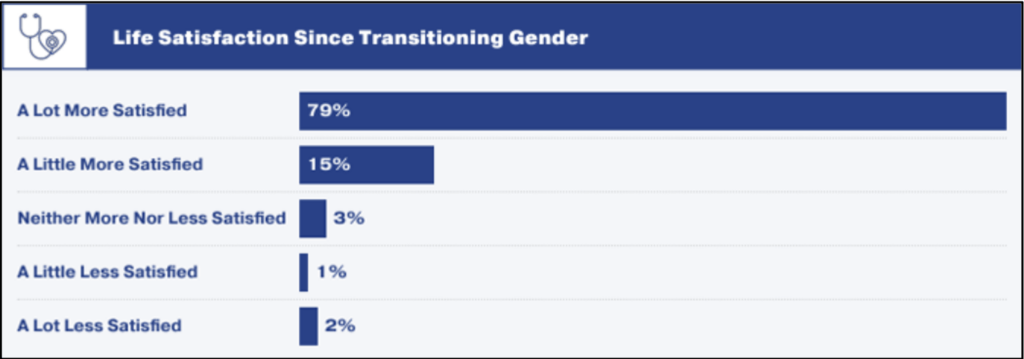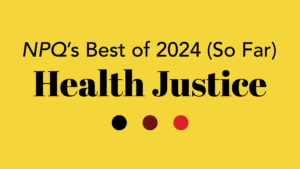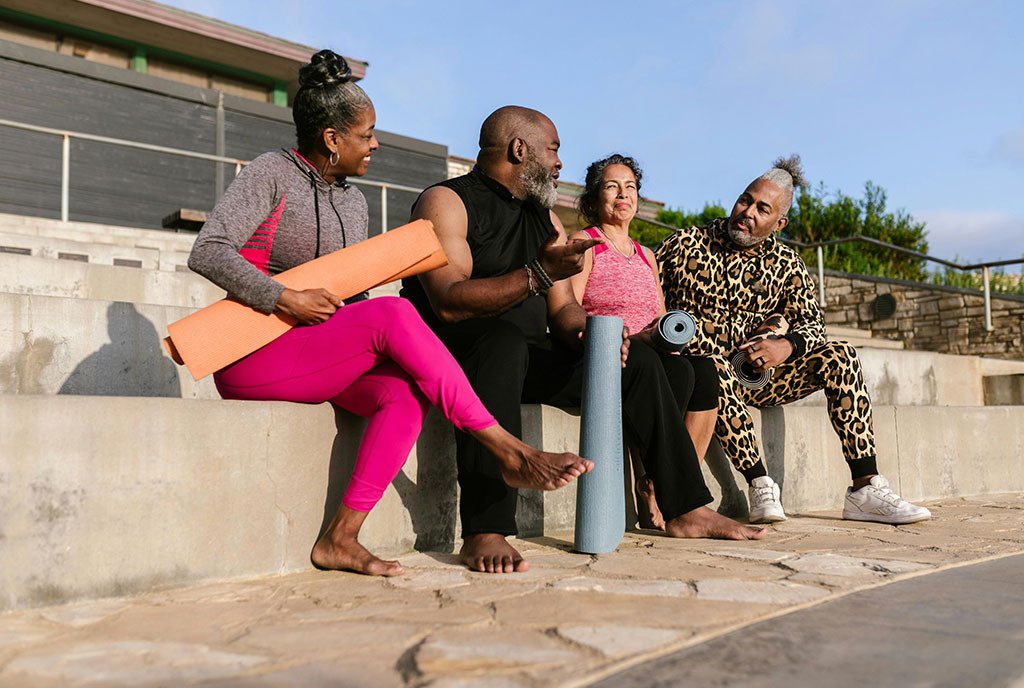
The 2022 US Transgender Survey (USTS) Early Insights Report (USTS) reveals trans Americans face significant barriers when accessing healthcare and other significant impediments to their health, safety, and wellbeing.
The [US Transgender Survey] “is now the largest survey…to examine the experiences of binary and nonbinary transgender people in the United States.”
The report represents a collaborative effort between the Black Trans Advocacy Coalition, the National Queer Asian Pacific Islander Alliance, TransLatin@ Coalition, the National Center for Transgender Equality (NCTE), and the 2022 USTS Scientific Advisory and Outreach Council—and an unprecedented effort to gather crucial data on the trans community.
According to the report, the 2022 USTS follows up on the 2015 version of the survey, “which has been an essential source of data on the experiences of transgender people for advocates, educators, researchers, policymakers, and the general public since the publication of the report in 2016.”
The 2015 USTS—which included responses from 6,452 members of the trans community—was a tremendous step forward for health data collection for trans people. With 92,329 respondents for the 2022 USTS survey, the USTS “is now the largest survey ever conducted to examine the experiences of binary and nonbinary transgender people in the United States.”
Findings from the 2022 US Transgender Survey
The 2022 USTS sample included respondents 16 and older, but its accompanying report only includes data from the 84,170 respondents who were at least 18 years old during the data collection period. Respondents come from all 50 US states, the District of Columbia, several US territories—including American Samoa, Guam, the Northern Mariana Islands, Puerto Rico, and the US Virgin Islands—as well as US military bases in other countries. Nearly all the survey respondents—95 percent—were US citizens by birth, another 3 percent were US citizens by naturalization, and 1 percent of respondents were permanent residents.
In addition to addressing the significant challenges and burdens transgender Americans continue to face when seeking healthcare, the report also provides important information about the trans community’s needs and sheds light on their most vital issues:
- Respondents’ Demographic Characteristics
Survey respondents represented different racial and ethnic backgrounds—56 percent identified as White; 14 percent identified as Latino(a)(x)(e); 13 percent identified as biracial or multiracial; 8 percent identified as Black; 7 percent identified as Asian American, Native Hawaiian or Pacific Islander; 1 percent identified as an Indigenous American; and less than 1 percent identified as Middle Eastern or North African, or another race.
Approximately 48 percent “reported having at least one negative experience [with a healthcare provider] because they were transgender.”
Different age categories were also well-represented in the survey: 43 percent were between the ages of 18 and 24 at the time of data collection, 36 percent were 25 to 44, 9 percent were 45 to 54, and 13 percent were 55 and over.
Respondents’ gender identities were also fairly diverse. Approximately 38 percent identified as nonbinary, another 35 percent identified as transgender women, and 25 percent identified as transgender men.
- General Health, Healthcare, and Health Insurance
When asked to rate their health, 66 percent of respondents said their health was good, very good, or excellent; 25 percent rated their health as fair; and 9 percent said their health was poor. Close to half of the survey’s expansive sample (44 percent) said they had “experienced serious psychological distress in the last 30 days.”
Nearly a quarter of respondents (24 percent) had not seen a doctor within the last 12 months due to mistreatment.
Among respondents who had seen a provider in the last 12 months, approximately 48 percent “reported having at least one negative experience because they were transgender, such as being refused health care, being misgendered, having a provider use harsh or abusive language when treating them, or having a provider be physically rough or abusive when treating them.”
In addition to adverse interactions in healthcare settings, a significant portion of the sample or 26 percent also had at least one issue with their health insurance company, which included “being denied coverage for hormone therapy, surgery, or another type of health care related to their gender identity/transition; gender-specific health care because they were transgender; or routine health care because they were transgender.”
Sign up for our free newsletters
Subscribe to NPQ's newsletters to have our top stories delivered directly to your inbox.
By signing up, you agree to our privacy policy and terms of use, and to receive messages from NPQ and our partners.
Through quotes that have been assigned pseudonyms and had other identifiers changed to protect the identities of people who participated in the survey, the survey website provides more perspective on the utility of hormone treatment and other forms of gender-affirming care. For instance, a respondent called Taylor said, “Obtaining hormone therapy through the informed consent model and having access to surgery has definitely changed my life for the better. It certainly didn’t fix all of my problems instantly, but it fixed a lot of problems that my dysphoria caused. Now that I’ve been on HRT and had surgery, I can live my day-to-day life without pain, dissociation, and misery.”
- Gender Identity and Transition
Almost all respondents—94 percent—who lived as a different gender than the one assigned at birth said they were more satisfied with their lives.

Nealy all survey respondents (98 percent) who were currently receiving hormone treatment reported that receiving hormones for their gender identity or transition made them more satisfied with their life. And approximately 97 percent of respondents who had at least one surgery for their gender identity/transition reported that they were more satisfied with their life.
- Family Life
Among adult survey respondents, 36 percent said their families knew that they were transgendered and were “supportive,” another 31 percent said their families were “very supportive.” However, 12 percent said that their families were unsupportive to varying degrees, and 22 percent said their families were “neither supportive nor unsupportive.”
More than one in 10 survey respondents (11 percent) said that at some point, someone who lived in their household was violent toward them because they were transgendered, and 8 percent said they were kicked out of their home because they were transgendered.
- Physical and Verbal Abuse
Nearly one in 10 respondents (9 percent) “reported that they were denied equal treatment or service in the last 12 months because of their gender identity or expression.” During the same period, 30 percent of respondents said they were verbally harassed for the same reason. Around 39 percent of respondents reported that they had been harassed online in the last 12 months, and 3 percent of respondents were physically attacked during the same period.
Public restrooms were a particular site of violence for trans people. During the time of data collection, 4 percent of survey respondents said that they were “denied access to a restroom in a public place, at work, or at school in the last 12 months” due to their gender identity and/or expression. Approximately 6 percent of respondents reported having been “verbally harassed, physically attacked, or experienced unwanted sexual contact when accessing or using a restroom.”
“At best, we’re working in a vacuum of information. At worst, we’re combatting dangerous misinformation being spread by anti-trans extremists.”
- Economic Issues and Displacement
At the time of data collection, more than a third of survey respondents (34 percent) were experiencing poverty, and 18 percent of survey respondents were unemployed. Approximately 11 percent of survey respondents who had held a job said they “had been fired, forced to resign, lost their job, or been laid off because of their gender identity or expression.” Around a third of the sample, or 30 percent, had experienced homelessness at some point in their lives.
Adverse experiences and unfair treatment also influenced respondents’ decisions about where to live. Nearly half of all adult respondents (47 percent) thought about moving out-of-state because their state government considered or enacted laws targeted trans people, and 5 percent of all adult respondents moved out of state for this reason. Whether to another state or a different area within the same state, about 10 percent of survey respondents moved due to discrimination.
The top 10 states respondents reported leaving are (in alphabetical order): Alabama, Arizona, Florida, Georgia, Missouri, North Carolina, Ohio, Tennessee, Texas and Virginia.
Progress in Transgender Advocacy
Though the survey itself resulted in some disparaging statistics, it is also an important milestone in data collection for the trans community and helps combat disinformation about trans people.
According to NBC News, the executive director of the NCTE—and one of the report’s authors—Rodrigo Heng-Lehtinen said that “there’s still a drought of information available to lawmakers, the media and advocates regarding our experiences and our needs….At best, we’re working in a vacuum of information. At worst, we’re combatting dangerous misinformation being spread by anti-trans extremists. Without question, the misinformation and lack of understanding is underpinning these escalating legislative attacks against our community.”
At a news conference about the survey, Heng-Lehtinen added that the 2022 survey is likely to serve as a springboard for transgender advocacy: “I am confident that the results of the 2022 survey will not only serve as a crucial tool for education, research and policy, but it will catalyze a paradigm shift for the movement for transgender advocacy by empowering advocates with robust and current data regarding our needs and experiences.”














